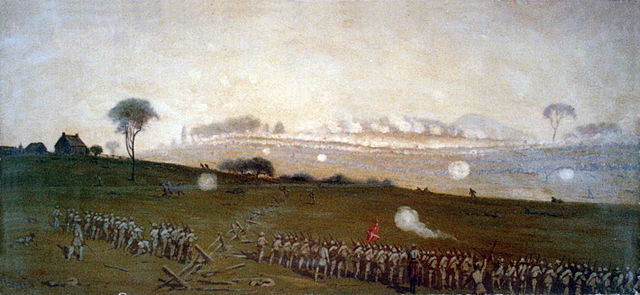Birkett Davenport Fry was an adventurer, soldier, lawyer, cotton manufacturer, and a Confederate brigadier general in the American Civil War. A survivor of four battle wounds, he commanded one of the lead brigades during Pickett's Charge at the Battle of Gettysburg.
Birkett D. Fry
Pickett's Charge, also known as the Pickett–Pettigrew–Trimble Charge, was an infantry assault ordered by Confederate General Robert E. Lee against Major General George G. Meade's Union positions on the last day of the Battle of Gettysburg in Pennsylvania during the Civil War. Confederate troops made a frontal assault toward the center of Union lines, ultimately being repulsed with heavy casualties. Suffering from a lack of preparation and problems from the onset, the attack was a costly mistake that decisively ended Lee's invasion of the north and forced a retreat back to Virginia.
General Pickett's Famous Charge at Gettysburg drawn by Alfred Waud
Pickett's Charge from a position on the Confederate line looking toward the Union lines, Ziegler's Grove on the left, clump of trees on right, painting by Edwin Forbes
Appearance of Cemetery Hill previous to Pickett's Charge, sketched by Alfred Waud
"A gun and gunners that repulsed Pickett's Charge" (from The Photographic History of the Civil War). This was Andrew Cowan's 1st New York Artillery Battery.





